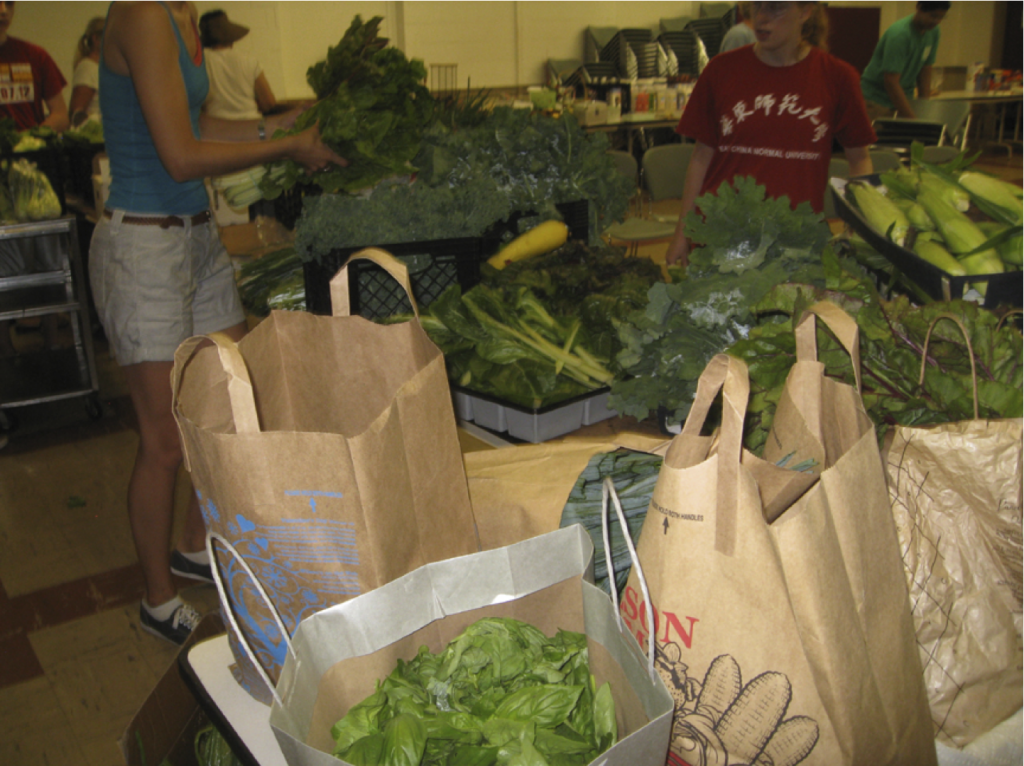Volunteers from:: Hancock, Follen and the Lexington Catholic Community
Weather: Hot and humid…great for the plants, not so much for the workers (but we were done by 9:30, so not to worry.)
Harvested: 183 pounds with 17 types of vegetables delivered (18 if there were 2 varieties of cukes, as there were last week). That includes: tomatoes, cabbage, garlic, shallots, yellow and red onions, Romano beans, green beans, corn, kale, Swiss chard, zucchini, yellow squash, cucumbers, basil, eggplant and beets.
Notes from the Garden:
- 183 pounds is the largest one-day delivery since the garden started. But we didn’t pick all of it today. Carla had put aside some crops (such as onions and garlic), letting them dry out sufficiently so they were ready to be added today to everything else. We did need both of the garden carts, plus Theresa following with a newspaper cone full of flowers.
- The heat of the past week has pushed the crops into hyper-productivity. One volunteer noted that she was afraid of having too aggressively cut the basil last week and was amazed to see such tremendous grow-back one week later! I saw further evidence on the main path. Butternut squash seems to have tripled since last week. Not only have they taken over where last week we emptied one of the lettuce beds, but they’ve also claimed a lot of the front path.
- The corn is ready! This is a major accomplishment since the last time corn was planted, the vast majority, if not all, was feasted upon by the local raccoons and/or opossums. That year we were only able to salvage a total of 9 pounds of ears. Today alone, 18.5 pounds of corn was sent over to the pantry.
- Carla noted that there really has only been one failed crop this year.
A more typical experience has been that cutworms get the broccoli or rabbits get the lettuce, etc. But this year, pests have been very much under control. However, the green peppers have a serious case of failure-to-thrive. Maybe planted in the wrong place? As we have been learning from our experienced gardener, part of the success of a garden is rotating where crops have been planted. For instance, potatoes take a lot of the nutrients out of the soil, so beds get moved around year to year and former beds get reworked with amendments or replanted with crops like peas that add back nitrogen to the soil. So if the peppers aren’t working, it may be the soil isn’t quite right for what that plant requires.
- Basil harvesting 101: Since working at this garden, I’ve discovered there really is a correct way to pick basil. Let me share what I’ve learned:
- Basil loves being cut, but cut from the top…don’t pick leaves off the plant. Trimming from the top keeps the plant productive, delaying when it goes to seed.
- Trim about 1/3 of the stalk, cutting back to just above where you find 2 leaves growing opposite to one another.
- When the basil stalk first starts to go to seed, it looks like a concentrated cone of baby leaves. I was expecting to see little flowers, but the flowers come later as the seeding process continues. It’s hard to see, but the center plant here has a leaf cone…which made it a prime candidate to get trimmed today.




